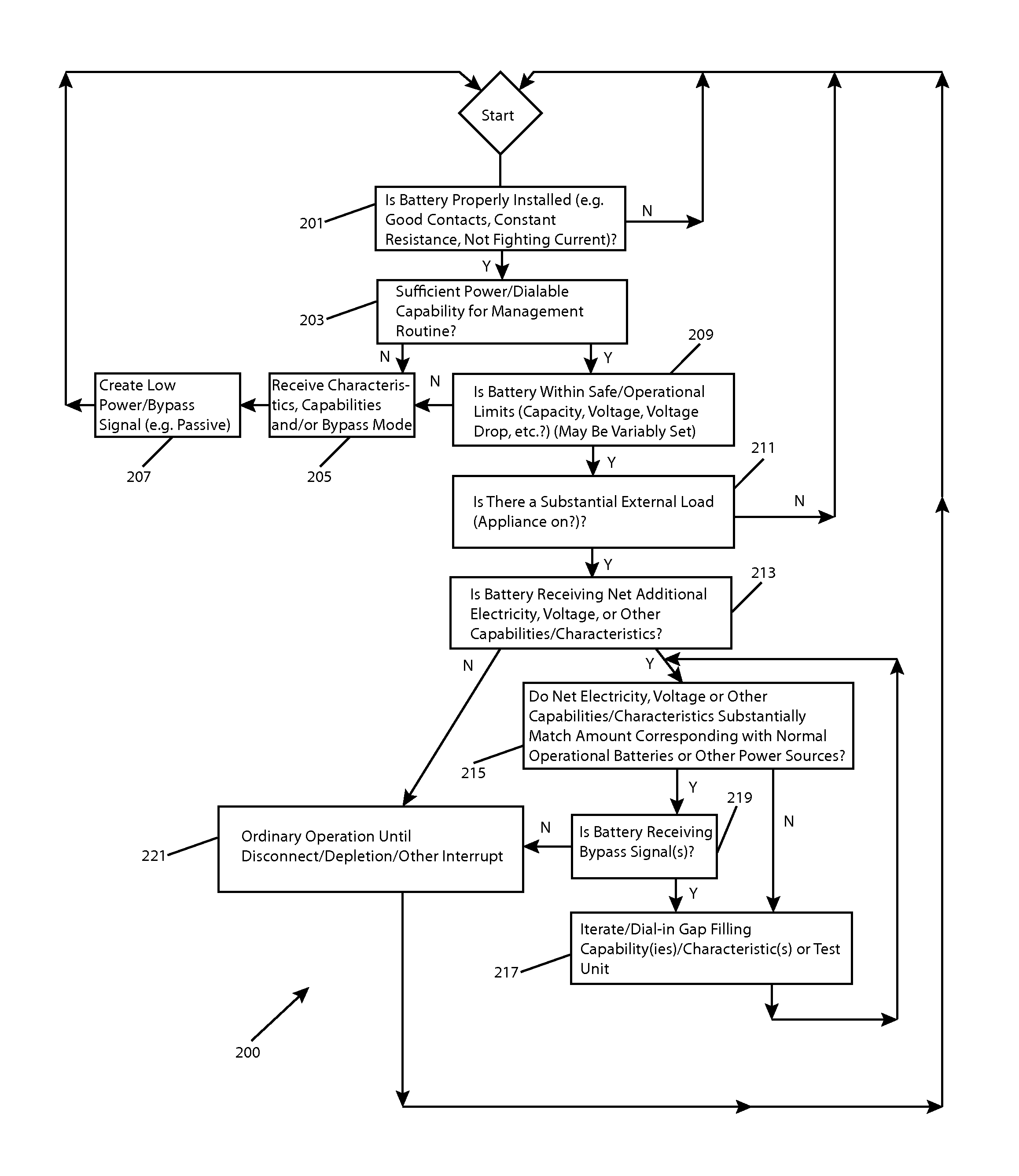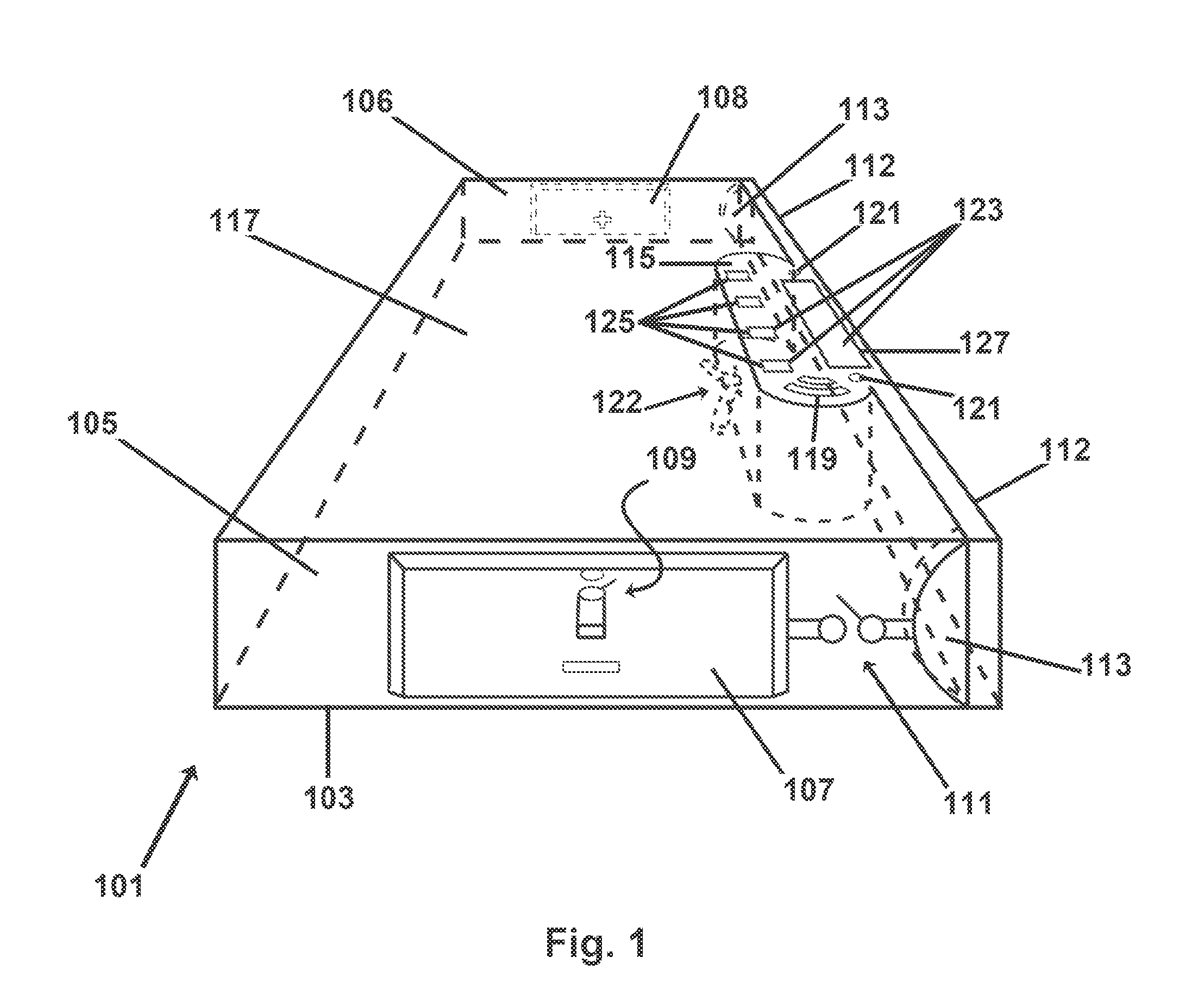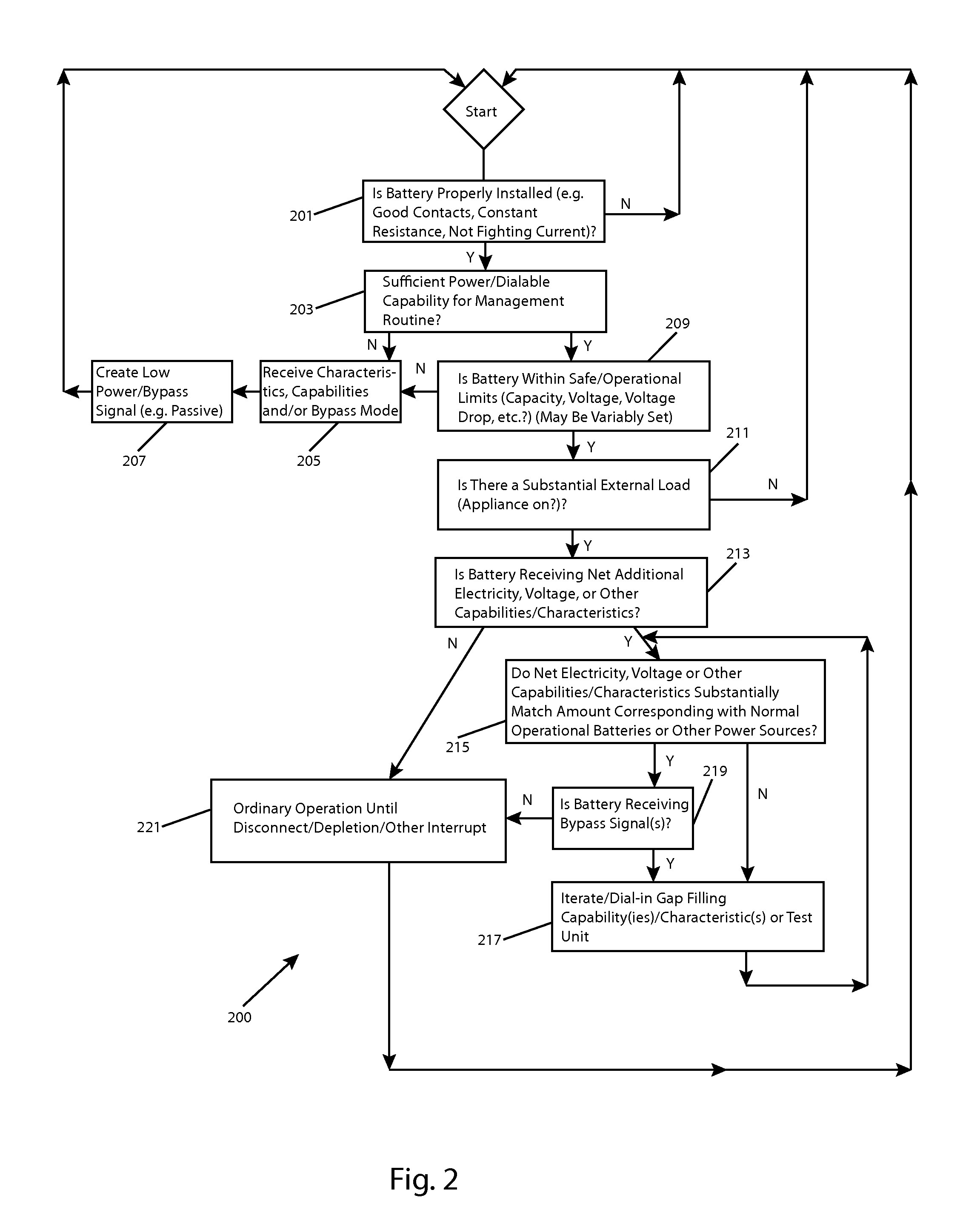Techniques for optimizing power supply output
a power supply and output technology, applied in the direction of optical radiation measurement, instruments, transportation and packaging, etc., can solve the problems of difficult to meet the needs of rechargeable batteries, difficult to meet internal chemical reactions, and relatively impractical power sources, so as to reduce wiring requirements and manufacturing costs
- Summary
- Abstract
- Description
- Claims
- Application Information
AI Technical Summary
Benefits of technology
Problems solved by technology
Method used
Image
Examples
Embodiment Construction
[0046]FIG. 1 is a perspective view of an exemplary specialized battery cell 101, comprising an electrical characteristics and delivery-adjusting system, in accordance with aspects of the present invention. The outer housing 103 of cell 101 is generally a rectangular box with narrowest sides 105 and 106, each of which incorporates an electrical terminal contact 107 and 108, respectively. Negative electrical terminal contact 107 (closest to the viewer, in the perspective of the drawing) may be variably coupled with, and therefore allow the conduction of electricity from, anode material contained within cell 101, via a system- and / or user-controllable switch 109. Another switch, 111, which also is user- or system-controllable, variably bridges electrical conduction between the negative terminal contact 107 and an electrically conductive lead 112 and auxiliary electrical conduction or communications contact / port 113 to and from a battery control system 115 and / or its control system actu...
PUM
 Login to View More
Login to View More Abstract
Description
Claims
Application Information
 Login to View More
Login to View More - R&D
- Intellectual Property
- Life Sciences
- Materials
- Tech Scout
- Unparalleled Data Quality
- Higher Quality Content
- 60% Fewer Hallucinations
Browse by: Latest US Patents, China's latest patents, Technical Efficacy Thesaurus, Application Domain, Technology Topic, Popular Technical Reports.
© 2025 PatSnap. All rights reserved.Legal|Privacy policy|Modern Slavery Act Transparency Statement|Sitemap|About US| Contact US: help@patsnap.com



